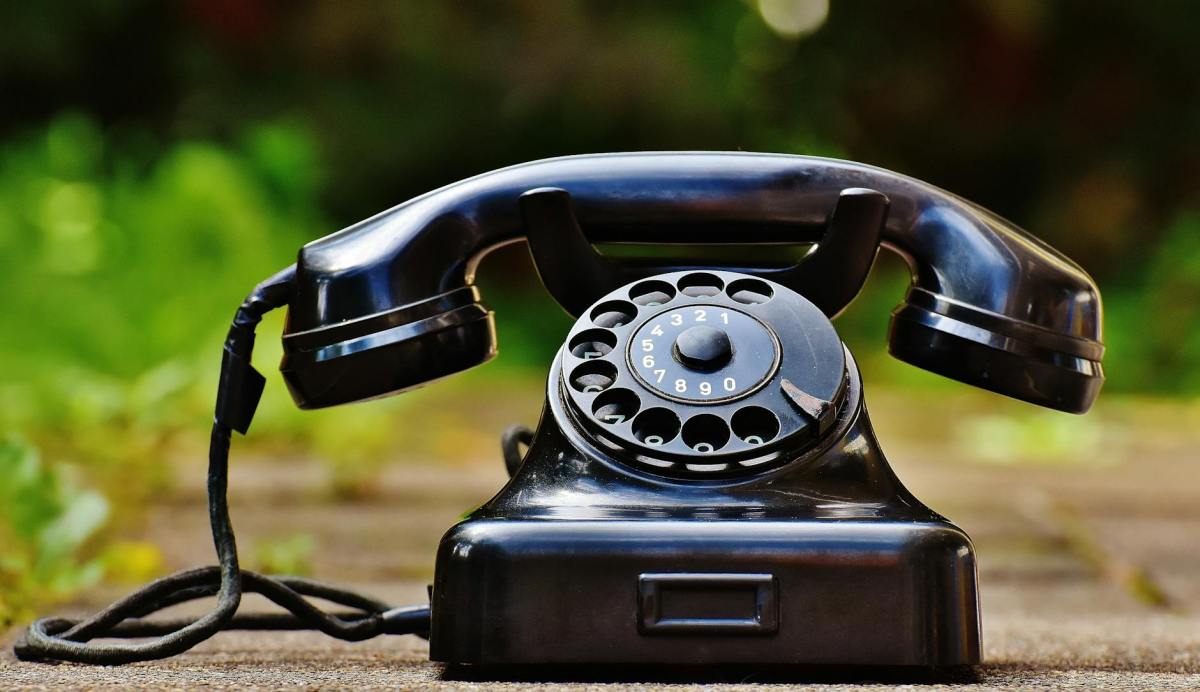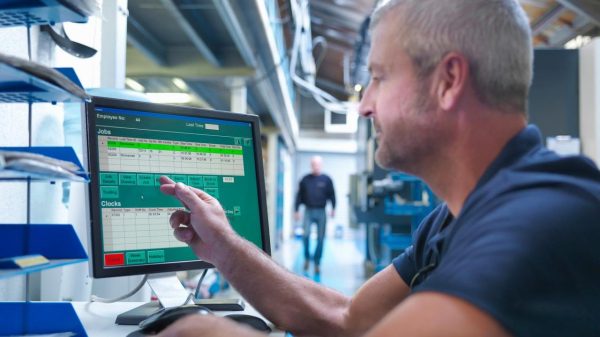19 April 2024 marks the centenary of Telefónica, 100 years of history that you can relive year after year on our Centenary website! This article is a tribute to a century of life, where I will share details about what it was like to have a telephone 100 years ago, even before the arrival of Telefónica, and some other curiosities that will surprise you.
Since the late 19th century, the telephone has been a true revolution in communications, business and personal relationships. It is fascinating to delve into its history, which has undergone a remarkable evolution and has played a fundamental role in the way we are becoming more and more connected.
The telephone, that little technological marvel, has left an indelible mark on society since its earliest days. Since its invention, it has been a key instrument in overcoming the barriers of distance and facilitating instant communication between people separated by great distances. It has made it possible to connect worlds and cultures quickly and efficiently, completely transforming the way we relate to each other and do business.
Over the years, the telephone has evolved in amazing ways. From the first rudimentary models to the sophisticated smartphones of today, we have witnessed technological advances that have vastly expanded the capabilities and functions of this device. From simple voice conversations to high-definition video conferencing, the telephone has evolved to adapt to the changing needs of modern society.
Despite constant advances in technology, the telephone remains an essential tool in our daily lives. Whether it is for communicating with friends and family, coordinating business or accessing vital information, the telephone remains an essential element in our daily lives. Its importance and usefulness persist, proving that, despite the passage of time, it remains a fundamental pillar of our digital lives.
The antechamber of Telefónica: the first telephone systems in Spain
It is astonishing to think that before the presence of Telefónica, there were already telephone systems in operation in Spain. In the last years of the 19th century, the authorities explored various strategies to expand telephone access in the country. In this context, governments adopted divergent approaches: while the conservatives opted to delegate powers to Telegrafos, the liberals preferred to rely on private companies to manage the service.
However, neither of these alternatives succeeded in catalysing the development of the telephone in any significant way. The efforts of Telégrafos and the private companies, although laudable, failed to generate the necessary momentum to democratise access to telephone communications in Spain.
It was only with the arrival of Telefónica in 1924 that the landscape began to change dramatically. Founded as a private company, Telefónica took on the challenge of building a solid and reliable infrastructure to provide telephone services throughout the country. Its emergence marked a crucial milestone in the history of Spanish communications, triggering rapid growth and greater accessibility to telephone services for citizens.
Restricted access: the telephone as a privilege of the elite in the 19th century
In the early days of the telephone service, the system of meters was not used to measure the use of the lines, but rather the telephone companies opted for an annual flat rate. This tariff, which allowed unlimited use of the telephone throughout the year, was subject to variations depending on the type of establishment where the service was installed.
For example, in 1886, the established prices were 300 pesetas per year (€1.80) for households wishing to use the telephone service. However, if the telephone was to be installed in a guest house, the tariff increased to 600 pesetas per year (€3.6). On the other hand, for public premises such as cafés or shops, the charge was up to 1,000 (6.01 €) pesetas per year.
These costs, although representing a considerable investment, were accessible only to a privileged part of the population. Considering that average salaries at that time ranged from 600 to 1,000 pesetas per year (between 3.6 and 6.01 euros), it was clear that telephone service was reserved mainly for those with the highest purchasing power. This situation drastically limited the democratisation of access to telephone communications, relegating its use to a privileged minority.
Telephonemes: The messaging revolution in the pre-digital era
With the emergence of the telephone on the communications scene, a service was inaugurated that represented a direct alternative to telegrams: the telephoneme. This innovative way of sending messages offered a fast and convenient way of communicating at a distance, similar to telegrams, but with the particularity that the transmission was carried out through the telephone network instead of using telegraph wires.
Telephonemes worked in a simple way: the sender drafted his message and transmitted it verbally to the telephone company operator, who was responsible for getting the information to the intended recipient. This practice eliminated the need to write and send a physical telegram, offering a quicker and more direct alternative for long-distance communication.
The convenience of telephonems was that they could be sent either from the comfort of one’s home or by going to the telephone company’s offices. In this way, users had the flexibility to choose the method that best suited their needs and preferences.
This service represented a significant advance in communications, providing users with a faster and more efficient option for sending urgent or important messages to people in different and distant locations. The introduction of the telephoneme was a milestone in the evolution of telecommunications, providing a modern and convenient alternative to the traditional telegram.
From four to nine: the evolution of telephone numbers over time
In the past, telephone numbers used to be considerably shorter by today’s standards. Whereas today they all have nine digits, in the past it was common to find telephone numbers consisting of only four or five digits. This short numbering reflected the scarcity of available telephone lines, especially in urban environments where access to this service was limited and calling outside the city was virtually impossible.
In addition, telephone companies used to warn their users about the temporary nature of the numbers assigned, as technical changes could require the numbering to be changed. For this reason, it was advisable not to get too attached to the assigned telephone number, as it was common for it to be changed or updated by the company.
Even Telefónica, the main telephone service provider at the time, advised its customers to refrain from including the telephone number on business cards. This caution was due to the volatility of the assigned numbers and the possibility of frequent changes, which could be confusing or impractical for business contacts.
This short length of telephone numbers and the warning about their possible change reflected the ongoing evolution of telephone infrastructures and the constant search for technical improvements by telephone service providers.
The road to universality: how barriers were overcome in 20th century telephony
At the dawn of the 20th century, the possibility of communicating by telephone with anyone, even if they had access to a telephone, was far from a universal reality. The reason behind this limitation lay in the lack of interconnection between all the telephone networks existing at the time.
At the time, some cities lacked a city telephone network connected to a switchboard, which led to the establishment of private lines. These consisted of the direct connection of two telephones, which allowed communication exclusively between them, without the possibility of making calls outside that particular connection. This practice was commonly used by businessmen who needed to communicate between their home office and their factory, for example. It was like the advanced equivalent of yoghurt phones, i.e. a limited private connection.
Over time, trunk lines gradually began to expand, and even international connections were established with neighbouring countries. However, there were still restrictions on communication between different populations. This was due to the need for both networks to be connected by a maximum of five nodes, in order to preserve sound quality and prevent deterioration during transmission.
Thus, although telephony was emerging as a revolutionary form of communication, there were still technical barriers that limited the ability to talk to anyone, anywhere. The complete interconnection of all telephone networks and the ability to communicate without restrictions would only be achieved with the continued advancement of telephone infrastructure and technology.
From operators to virtual assistants: how it has changed the way we make calls
Before the advent of the automated telephone, making a phone call involved interacting with an operator. To initiate a call, you had to pick up the handset and tell the operator the number of the subscriber you wanted to speak to. This person was responsible for establishing the connection between our wire and that of the other party involved in the call.
In this way, the operator played a fundamental role in the communication process by acting as an intermediary to facilitate the connection between the users. Her intervention was essential to ensure that the call was correctly routed and to establish effective communication between the two parties.
In a way, the operator’s role is similar to what we would do today when interacting with a voice assistant such as Siri. Both act as intermediaries between the user and the technology, facilitating the accomplishment of tasks and the performance of specific actions, in this case, the telephone connection.
From human voice to electronic tone: the evolution of the telephone experience
With the advent of the automated telephone, it became necessary to educate users about its operation, as it represented a significant change for those accustomed to interacting with telephone operators. Previously, on picking up the handset, users were greeted by a greeting from an operator, whose voice indicated that the connection was ready to be established. With the introduction of the automated telephone, however, this ritual changed radically.
Instead of being greeted by a human voice on picking up the handset, a continuous tone was heard. This change required users to learn to interpret the different tones emitted by the telephone to perform different actions. For example, the continuous tone indicated that the desired number could be dialled, while a long intermittent tone indicated that the call was being established and a short intermittent tone indicated that the line was busy.
Faced with this new dynamic, Telefónica had to launch advertising campaigns to educate its customers on how to interpret these tones and use the automatic telephone properly. This initiative sought to ensure a smooth transition to the new technology and to ensure that users could take full advantage of its functions.
Numbers that last: the history of special services in telephony
Nearly a century has passed, yet some aspects of telecommunications have remained largely unchanged. With the introduction of the automatic telephone, a number of special numbers were introduced to facilitate various services and some of them are likely to be familiar to you:
02, now recognised as 1002, was initially the number for reporting faults. Similarly, 04, now 1004, was intended for Telefónica’s customer service.
Although other numbers have disappeared over time, it is worth mentioning their relevance until recently: 03 became first 003 and then 1003, being the main information channel until it was replaced by numbers starting with 118xx, now obsolete due to the omnipresence of Google.
07, once used to request radio conferences with ships, evolved into 007, although its use for telephoneme had ceased in the 1980s.
09 ceased to be used for long-distance calls, but persisted for special services such as collect. Today, it has evolved slightly to become 1409.









